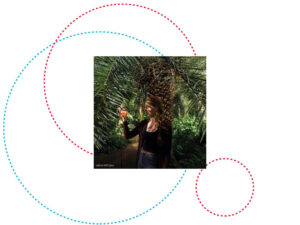A team of researchers from Jena (Germany) has realized the challenge to make the invisible visible by utilizing novel mixed-method spectroscopic methods that allow for the observation of photocatalytic processes with unprecedented resolution and precision. This achievement has earned Dr. Carolin Müller, working in the group of Prof. Alexandre Tkatchenko, Dr. Linda Zedler, and Prof. Dr. Benjamin Dietzek-Ivanšić the prestigious 25,000€ Thuringian Research Prize in the Applied Research category, which was presented by Thuringia’s Science Minister Wolfgang Tiefensee in Jena on April 19, 2023.

Renewable energy sources are key to meeting the world’s growing demand for energy sustainability. Among them, solar energy plays a crucial role, and researchers worldwide are exploring ways to capture solar energy more efficiently. “Nature can provide the answers”, believes the team in Jena. Photosynthesis in plants relies on natural light-capturing molecules, namely photocatalysts that absorb sunlight and store this energy by synthesizing high-energy molecules. Inspired by nature’s example, artificial photocatalysts are designed. However, in-depth understanding of the process mechanisms of these systems creates the prerequisite for imitating and optimising efficient natural principles in technical processes.
This is where the breakthrough of the research team from Jena comes in: The team’s novel methods allow them to monitor the process of photocatalysis, i.e., to observe extremely short-lived intermediates. This provides fundamental insights into the catalytic mechanism, ultimately leading to a better understanding of how to develop more efficient photocatalytic systems.
“We achieved this breakthrough by combining two experimental methods: time-resolved spectro-electrochemical and operando absorption spectroscopy”, says the research team. In the first approach, the molecules to be investigated are electrically „charged“, i.e., chemically oxidized or reduced. “This allows us to prepare molecules with similar chemical properties to intermediates of photocatalytic processes, except that they are more durable and in higher concentrations in the specially developed electrochemical cell. For this reason the molecules are more accessible for subsequent optical spectroscopy which enables us to study the light-induced processes and structural rearrangements of the molecules in detail”, describes the research team.
Secondly, operando absorption spectroscopy allowed the researchers to monitor the photocatalysts “at work”, providing insights into catalytically active and inactive long-lived intermediates and side products. Therefore they realized a mixed-method operando spectroscopic approach, where steady-state and time-resolved absorption experiments are performed at different reaction stages, i.e., during light-irradiation that triggers the photocatalytic process. “In this way, we obtain snapshots depicting the course of the catalysis”, reports the research team.
These methods are essential complements to the optical spectroscopic methods typically used to precisely observe the light-induced reactivity of short-lived intermediates of photocatalytic reactions. The scientists have thus created a new spectroscopic tool to better understand photocatalytic reactions.
About the Research Team
Prof. Dr. Benjamin Dietzek-Ivanšić is head of the Functional Interfaces Research Department at Leibniz Institute of Photonic Technology and Professor of Physical Chemistry at Friedrich Schiller University Jena. The scientist is proud of his team, consisting of Dr. Linda Zedler and Dr. Carolin Müller with whom he achieved important milestones in the study of photocatalytic processes.
Dr. Carolin Müller is now a Feodor-Lynen Postdoctoral Researcher of the Alexander von Humboldt Foundation working in the group of Prof. Alexandre Tkatchenko at the University of Luxembourg. Inspired by her previous work on experimentally elucidating photocatalytic mechanism, she dedicates her current work to the development of machine learning assisted methods for the theoretical exploration of light-induced reaction mechanism. “The understanding of light-induced reaction mechanisms achieved through both, experimental and theoretical approaches, will serve as a foundation for developing effective catalysts in the upcoming years“, says Dr. Carolin Müller.
About the Thuringian Research Prize
The Thuringian Research Prize has been honoring top scientific achievements at Thuringian universities and non-university research institutions since 1995. A jury of renowned scientists from all over Germany decides on the award, and the team’s achievement was deemed worthy of the Applied Research category prize. Further information: www.thueringer-forschungspreis.de
